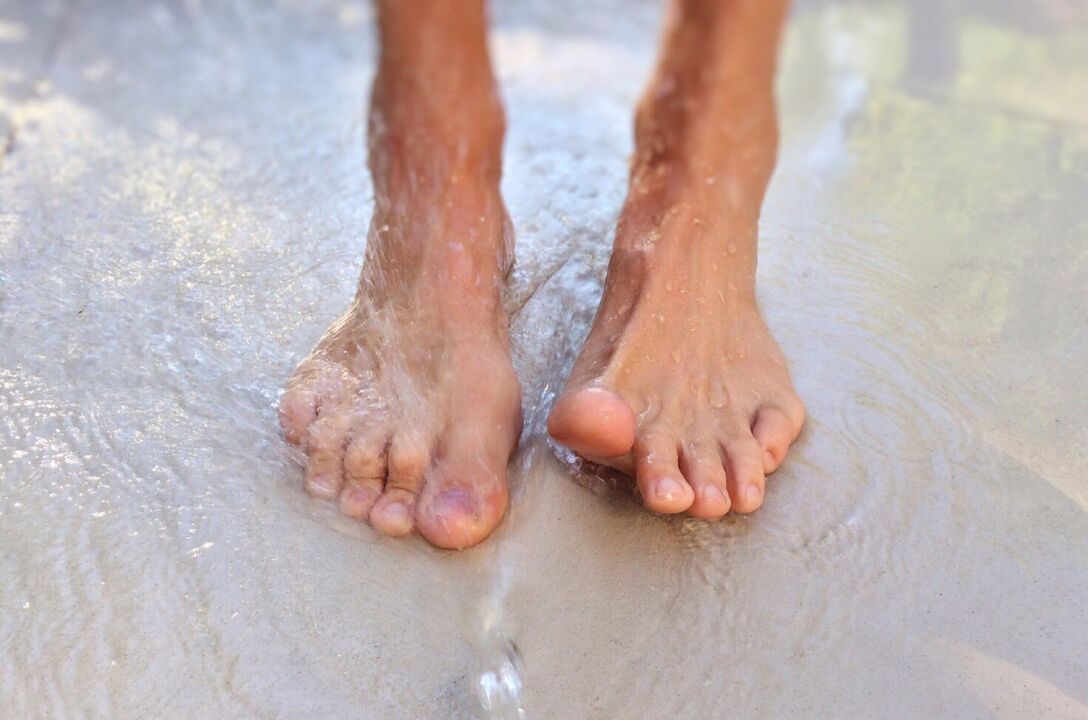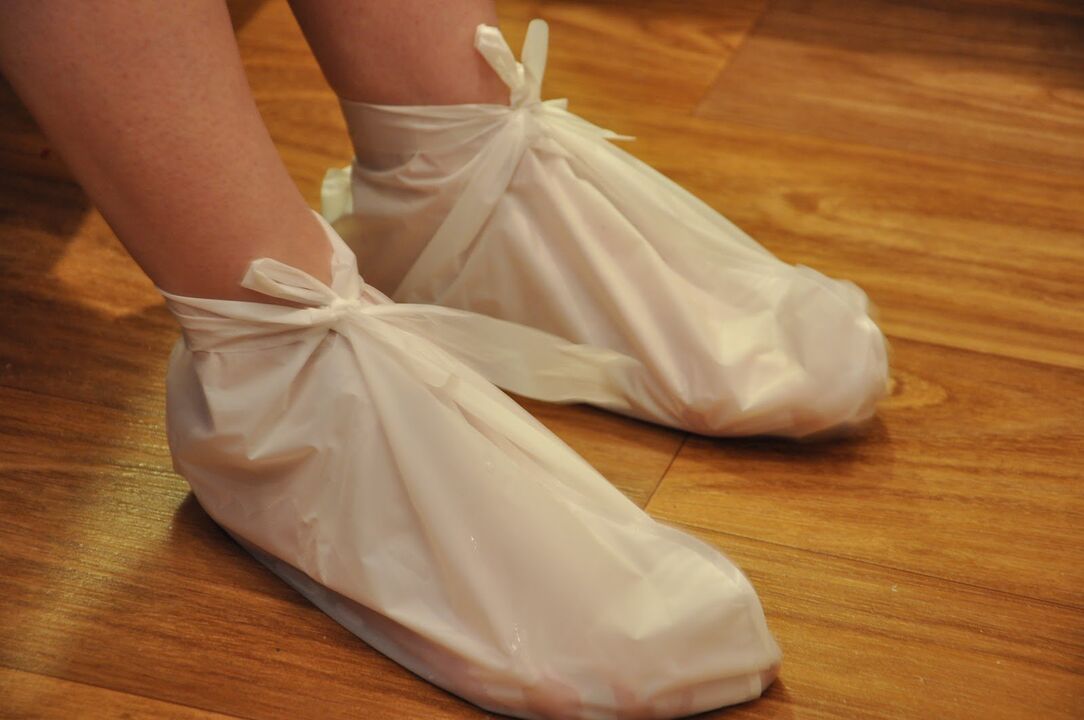Every disease requires a responsible approach, including fungus on the feet - treatment at home must also follow certain rules.
For your information
Much depends on the area and intensity of the skin and nail damage, whether there are any other side effects, even the age of the patient is taken into account. In any case, all funds are divided into 3 main groups. If you want to treat foot fungus at home, you can use topical preparations - these are special ointments, patches and other similar products that are sold in any pharmacy. You can also take medicine for internal use. And, finally, it is possible to treat foot fungus exclusively with folk remedies - of course, with a reasonable approach. Moreover, some experts believe that the most effective therapy is complex, that is, it is necessary to treat the disease in ways from different groups.

First you need to make sure that you are dealing with mycosis (this is the scientific name of the disease). It has obvious symptoms, such as itching and inflammation of the skin. There is a membrane type fungus, when exfoliating scales appear on the skin - usually it is localized between the 4th toe and the little finger. Sometimes this can be accompanied by a bacterial infection that exacerbates the symptoms described. The presence of infection can be indicated by the appearance of fluid -filled blisters on the skin. This is how vesicular mycosis manifests itself. But moccasin-like fungi are manifested not so much by itching but by a painful sensation in the feet, which is accompanied by skin roughness and cracking.
Medications
If you are sure of this diagnosis, you can treat the fungus at home with topical products. But remember that they are effective only in the early stages of the disease. In further cases, you need to drink and medication for internal use.
As a rule, if the fungus only affects the skin, then you need to use some kind of topical cream; pharmacies offer a wide selection of such products. The course of treatment in this case is from 2 to 6 weeks, depending on the dose and intensity of use. If this is not only foot fungus, then the disease has also affected keratolytic type patches, which will help get rid of the affected nail area.
As for ways for internal use, this is a rather radical way.
It is better to use them all exactly as directed and under the supervision of a doctor. The course of use will be quite long until not only the manifestation of symptoms, but also the harmful organism itself disappears completely. As a rule, in such cases, pulse therapy is used, when the drug for the fungus is taken at certain intervals, for example, they take this drug for a week, then withstand a break of three weeks, then a new weekly course of therapy follows. While it is believed that other medications can be taken at this time, it is better not to do this.
Restoration of the people
Of course, not a single doctor will advise you to treat the fungus yourself, if only because you need to make a proper diagnosis first. However, if you are sure that this is just such a disease, foot fungus at home can also be treated with folk remedies. Which is considered the most effective?
Treatment of fungus on the feet is often advised to be carried out with the help of washing powder. Such tools contain a lot of alkali that kills these microorganisms. You can cure the fungus as follows: for at least 2 weeks, soak your feet in hot water, in which 100 g of this detergent was previously diluted. In about 2 weeks, the symptoms of the disease will disappear. But to ensure results, it is best to continue for another 2-3 days. The disadvantage of this tool is the possibility of allergic reactions to washing powder. In order for alkali to act on fungal infections, other means can be used, for example, ordinary baking soda diluted with water.
Hydrogen peroxide is used to treat foot fungus. It is especially effective when the disease has also affected the nail plate. When using this method, you need to steam the skin and nails first in a soda solution, of which 1 teaspoon is taken. baking soda and diluted with hot water. When the nails are sufficiently steamed, you can use hydrogen peroxide - cotton pads impregnated with this composition and applied to the affected area. To prevent the peroxide from evaporating too quickly (and also to create a compression effect), the legs are wrapped in plastic wrap or wrapped in a plastic bag for about an hour. Fungus on the feet is treated with this method for several weeks, depending on the degree of damage to the skin and nails. Ideally, compresses should be done 2 times a day, morning and evening.

Foot fungus at home can also be treated with ammonia (it is sold in pharmacies). It is not used in pure form, but as an aqueous solution (1 tablespoon of alcohol per 1 tablespoon of boiled water). In this solution, you need to dip a cotton cloth and make a compress, which is kept on the feet all night. Boric acid is considered an effective remedy. You can buy it in powder form at the pharmacy. They are used as a powder. 10 sessions is enough to forget about the infection.
Another popular remedy is garlic. The cloves should be cut in half, dip in salt and rub the affected area. Garlic can also be used for compresses. The most common onions work the same way. From herbs you can advise chamomile, mint, sage. Dried herbs are mixed and put in socks to wear throughout the day. In summer, it is better to use fresh plants, including chamomile flowers, than dried herbs.
In the early stages, you can fight the fungus with the help of regular medical alcohol. It is enough to insert the cotton between the fingers for 2 weeks and leave overnight.
prevention
It is possible to get rid of foot fungus, but for effective treatment, it is necessary to disinfect objects that have come in contact with sick people. At home, this, of course, is a bath, shower, personal belongings of the patient - from shoes and underwear to nail care tools. For processing, washing powder or chloramine solution is usually used. Shoes are best treated with a solution of acetic acid (40%). Particular attention should be paid to the inside and sides of the shoe or boot. After using acetic acid, the shoes should be screened. For linen, it must be boiled in a soapy soda solution and ironed with a hot iron.
In the future, you need to pay special attention to hygiene issues - if you go to the sauna or gym, use antifungal ointments and varnishes. You also need to dry your shoes carefully, especially sports shoes.
























